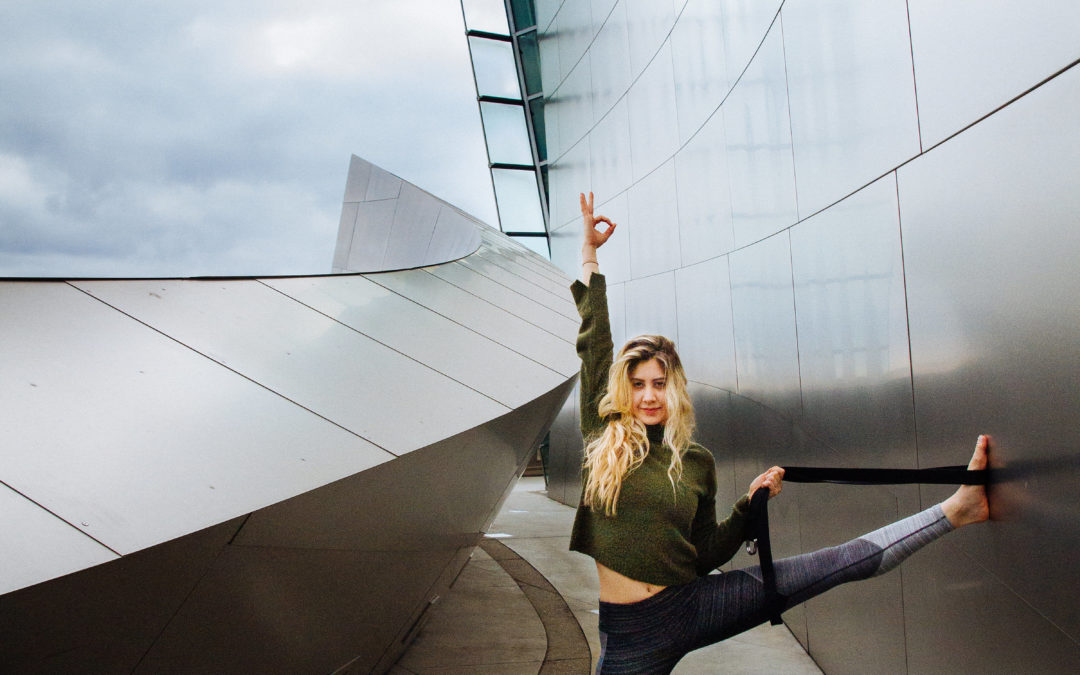
by Jasmine | May 26, 2017 | Yoga Therapy
A ROOT Awakening #9: Unexpected Ways To Regain Balance
Life is a balancing act and most of us are shortchanging our mental wellbeing in order to “maximize” our days. But what are we maximizing? Sure, we may be more productive at work in the short-term, but what are we doing for ourselves to ensure we’re also maximizing our own joy and centeredness?
I’ve been struggling with this a lot lately as I recently moved across town and watched my commute time triple. While I work hard at mapping out my route and schedule to balance and “maximize” my time on the road, I still feel overwhelmed by my responsibilities, household duties and my ever-growing to-do list. I can’t be my best for my work or family unless I feel the best inside, and that’s why balance is so critical.
Yoga therapy is not just something we do on a mat. It is a lifestyle that we adopt as a tool to manage our health. If we learn how to shift our habits to harness a little more balance in each day, there is no doubt that we will see an overall shift in health in all aspects of our lives.
So, h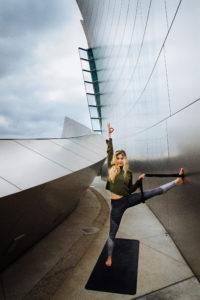 ere are the 2 habit changes that I’ve been working on this month to regain my balance. What about you?
ere are the 2 habit changes that I’ve been working on this month to regain my balance. What about you?
- Honoring the gaps: We all experience those “moments in between” throughout the day. This can be the few minutes you are waiting for an appointment or waiting to pick up your kids from school. We often fill in those those little gaps by pulling out our phones and responding to an email, checking social media, or texting. Imagine if instead of filling that gap with mini-work moments or devices, you used those 3 or 5 minutes to mentally recharge. Some great ways are by simply being present, closing your eyes, or breathing with purpose. Over the course of the day, these little “moments in between” can add up to good chunk of time and are a great way to sneak in a little self-care throughout the day. Taking a few minutes to check in with ourselves can be extremely beneficial for our emotional and mental well-being.
- Practicing Compassion: How many of us feel guilty when we don’t complete every task in our day? I know I do. Well, there is a reason for this. Most of us link our productivity and performance with our self- worth. We link relaxing to laziness. It is important to remind ourselves that life is about growth, not about getting tasks done. This is a journey. When we are over-worked and overstimulated we are putting an inordinate amount of stress on our nervous system which eventually leads to burn out and disease. Guilt will only drive the imbalance. Have compassion for yourself and that you are human. To be the best you it is imperative that we move back and forth between action and reflection.
Remember it is not about perfection. These are not things I have mastered but certainly they are things I strive for and continue to practice.
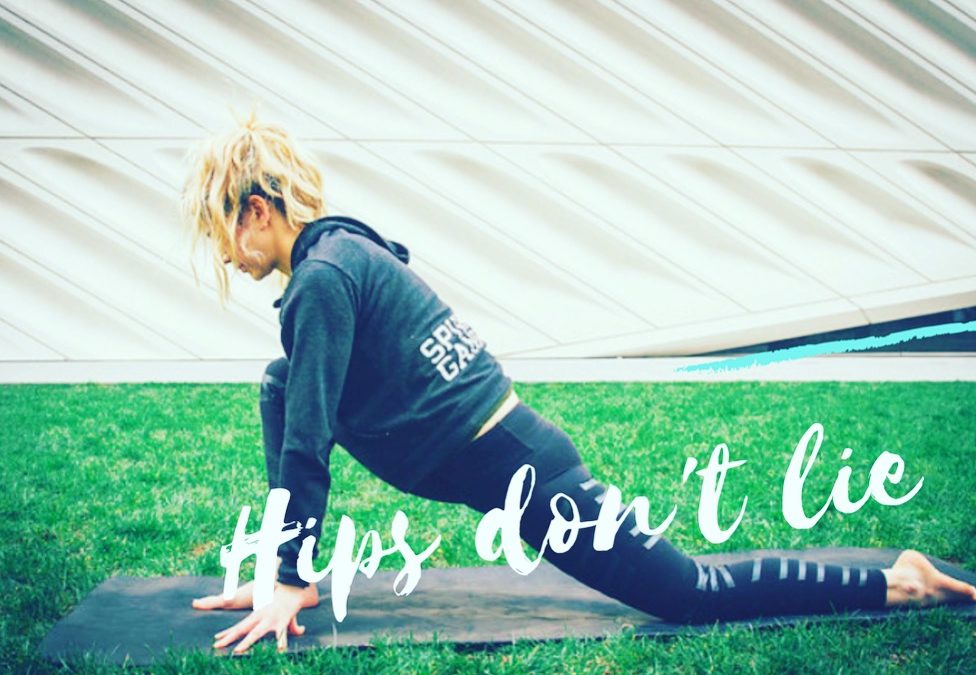
by Jasmine | May 19, 2017 | Yoga Therapy
A ROOT Awakening #8: Healing your hips
In honor of women’s health week, we are digging deep into our hips to understand and acknowledge just how important they are. In life, most women have several roles – mother, wife, employee, boss, friend, caregiver, and so on. Now, throw in the inevitable hormone changes and it’s no wonder that women are twice as likely to experience depression as opposed to men.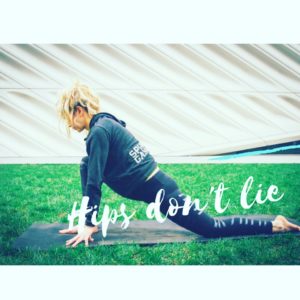
So, what does all this have to do with your hips?
Commonly talked about as the ‘junk drawer’ or ‘attic’ of the body, our hips are recognized as a storage for emotions. Most of the time, it is the emotions that we are not ready to confront and therefore decide (whether we know it or not) to tuck them away into the deepest parts of our being. The sensory nervous system (the part of the nervous system that responds to sensory experience or “feeling” experience) establishes connections in the hip area to promote survival in times of emotional stress. (Hey hips! Get ready to run for your life!). For women, the hips are also our center of gravity and when they are off balance, so are we.
From a yoga therapy perspective, the hips are part of the sacral or second chakra (aka: energy center). This is the center for feelings, sensations, pleasure and enjoyment. When out of balance, a person can experience feelings of disconnect from the deepest parts of themselves and others. That sense of disconnect feeds feelings of depression and isolation.
But don’t worry, you’ve got the power to heal your hips (and any other part of you)!
#1. Create the space! This is the first step. We are so used to wearing so many different hats and caring for others, that we literally don’t have the time or energy to care for ourselves, let alone notice our feelings! It is crucial that we schedule (yes, put it in your calendar) our “me time” to intentionally reconnect with ourselves. I like to use my “me time” to breathe and take a mental inventory of my body, otherwise known as a body scan. As I check in with different parts of my body (from head to toe), I have a chance to discover where I am feeling stress or tension in my body. There is no way we will know how to best serve our needs if we don’t know where we stand.
#2. Let’s get physical! Did you know the cells of the body retain the energy of a traumatic event? Since the stress of a trauma can overload our nervous system, our bodies will activate a protective mechanism. However, in doing so, we stop the trauma from fully processing. Often times, the undigested emotions are stored in the surrounding muscles and connective tissue. Our brain will then disconnect from that part of the body to block the sensory experience from re-emerging, which is a huge challenge for the healing process. That’s how the hips can become our physical “junk drawer”.
A great way to get in touch and reconnect with this region of the body is to tap into it physically. Try hip stretches like a butterfly pose, low lunge, or even a simple cross legged seat.
#3. Find your inner resource! Emotions act as the vehicle for the body to find balance after a traumatic event. Perhaps we didn’t have the confidence or internal support to handle the experience. Developing or strengthening our connection with an inner resource – a mental “safe place” that brings us feelings of ease and well-being – can be a great tool to increase our ability to:
- process feelings
- release stored trauma
- manage stress
My family acts as my inner resource because the images and memories bring me feelings of love and support.
So, now that you know that your hips don’t lie… what are your hips telling you?
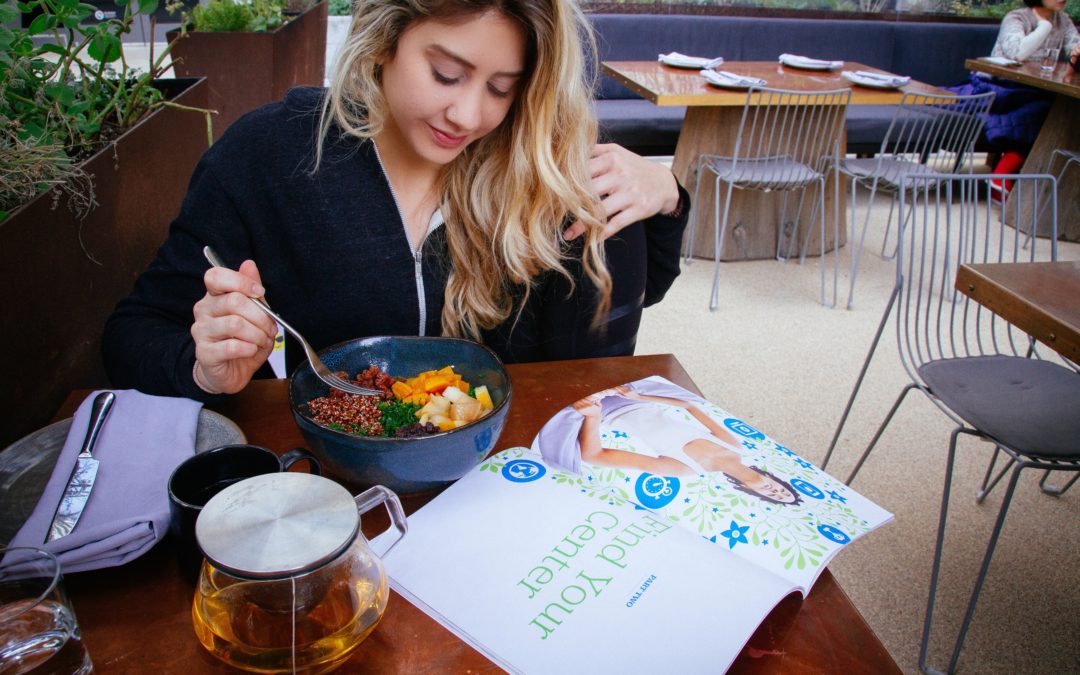
by Jasmine | May 12, 2017 | Yoga Therapy
A Root Awakening #7: Harness the Power of Prevention
Did you know that in 2012 the Center for Disease Control reported about half of all adults (117 million people) had one or more chronic health conditions? Chronic conditions run the gamut from diabetes, arthritis and heart disease to asthma and high blood pressure. With all the upcoming changes in healthcare and the widespread increase in chronic conditions, taking steps towards preventative care is more important than ever. Most people don’t know what preventative care is or why it’s beneficial. Preventative health care is actively taking the steps to stop diseases before they develop.

How yoga therapy can be used as preventative medicine:
Tackle stress: Studies show that stress contributes to the cause of heart disease, cancer, stroke, respiratory conditions and other chronic disease. Yogic breathing and mindfulness practices are highly effective in managing and lowering stress. Their ability to stimulate the immune system and invoke relaxation work to lower blood pressure, reduce the production of the stress hormone cortisol, and increases blood flow to the intestines and vital organs. I put this to the test with my 94 year asthma patient. After practicing specific lung strengthening techniques consistently for several weeks, my patient reported that she had reduced her use of her inhalers by 70%, and that she was down from 3 different medications to 1 medication! Sweet relief!
Get up and active: A sedentary lifestyle (which is very common) is the main cause of chronic disease. Inactivity increases the risk of high blood pressure, type II diabetes, and may double the risk of heart disease, not to mention the aches and pains. Yikes! Developing strength and flexibility are essential for keeping your internal and external body in an optimal state. Adopting a physical yoga therapy practice will lengthen your muscles, loosen connective tissue that surrounds the joints to relieve tension, and build muscle mass or maintain muscle strength, which protects from conditions such as arthritis, osteoporosis and back pain.
Sleep tight: While stimulation is good, too much can be taxing on the nervous system. 30% of people suffer from insomnia and more than half of Americans lose sleep due to stress and anxiety. Sleep deprivation is linked to a weakened immune system, lowered brain function, kidney disease, poor emotional well-being and plays a role in increased chronic pain symptoms. Thankfully, yoga therapy provides relief from excess stimulation and the “on-the-go” nature of modern life. After struggling with an interrupted sleep pattern because of the constant “to-do” list that plagued my mind, I began using restorative postures and Yoga Nidra (aka: yoga sleep meditation) to promote sleep. This gave my nervous system a chance to whine down before drifting off to dreamland. In doing so, my body was able to release tension and truly relax. Now, I sleep soundly only waking to the sound of my alarm.
It’s an exciting time as we are finally understanding that what we believe about our health and our bodies are key points for healing. Yoga therapy as preventative care opens the door for us to be less dependent on doctors exclusively for our well- being, instilling hope and the opportunity to regain control of their health.
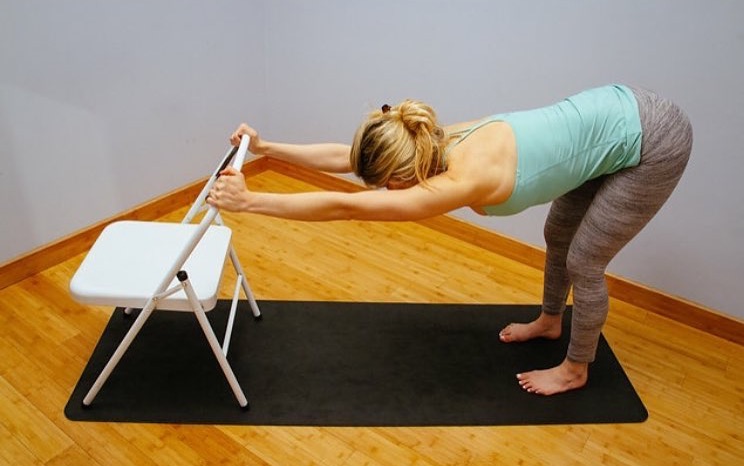
by Jasmine | May 5, 2017 | Yoga Therapy
A ROOT Awakening #6: The “Inflexible” Yogi!
By: Jasmine Rausch
True or false – physical flexibility is a prerequisite for yoga? False – although I completely understand why the myth exists. Each time you do an online search of the term “yoga,” you are bombarded with pictures of people doing the splits, handstands, or some sort of twisting splits handstand combination. All of these images showcase flexible people performing physically challenging poses or “asanas”. While these images are stunning and impressive, they also have a negative impact on the budding yogis out there.
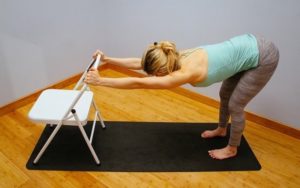 Next time you see those pictures and start to feel discouraged about yoga, don’t and here’s why:
Next time you see those pictures and start to feel discouraged about yoga, don’t and here’s why:
- No judgement on your journey: The intimidation we feel from those bendy-bodies means that we’ve likely entered a place of self-judgement. Before ever doing our first downward facing dog, we are already criticizing our abilities and shutting ourselves out from this beautiful and deeply healing practice.
REMEMBER: Every-body is individual. Yoga is not about touching your toes or folding your body in two. There are many life-long practitioners who never end up touching their toes because the shape of their skeleton (i.e.: long legs/short torso) simply won’t allow it. Try focusing on what you can do and not on what you can’t do. Yoga is not a quick fix or a means to an end.
- Like the beloved Shrek, you have layers: In Western society, yoga is promoted as a physical exercise. But did you know that yoga has very little to do with the external? The essence of yoga is bridging that gap between mind and body. Yoga views that body as a 5-layer system (physical, emotional, mental, intellectual and spiritual) and the poses are just one Yoga is about self-study, connectedness, compassion, and awareness. As the great B.K.S. Iyengar said, “Yoga means union- the union of body with consciousness and consciousness with the soul. Yoga cultivates the ways of maintaining a balanced attitude in day-to-day life and endows skill in the performance of one’s actions.”
REMEMBER: Veteran yogis know that our time on the mat is a safe place to explore and reflect on sensation, demonstrate the ways we can show up for ourselves and release stuck emotional and mental stress. Our practice exists far beyond or bodies.
- Flexibility is in the mind: Now that you know that your inflexible body is just one layer of the practice, consider looking elsewhere for your flexibility. For example, having mental flexibility, otherwise known as an open mind, is a great place to start! As En Vogue once sang, “Free your mind and the rest will follow.” Yoga is a journey with no end point and should not be rushed.
REMEMBER: There are unlimited ways to modify your physical practice. If you can’t touch your toes or bend your knees there is no shame in adjusting your pose to suit your needs. Offering yourself compassion and permission to use these modifications will result in more physical benefits and less chance of injury!

 ere are the 2 habit changes that I’ve been working on this month to regain my balance. What about you?
ere are the 2 habit changes that I’ve been working on this month to regain my balance. What about you?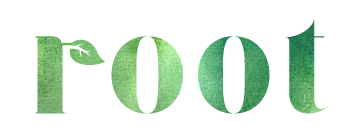






Recent Comments